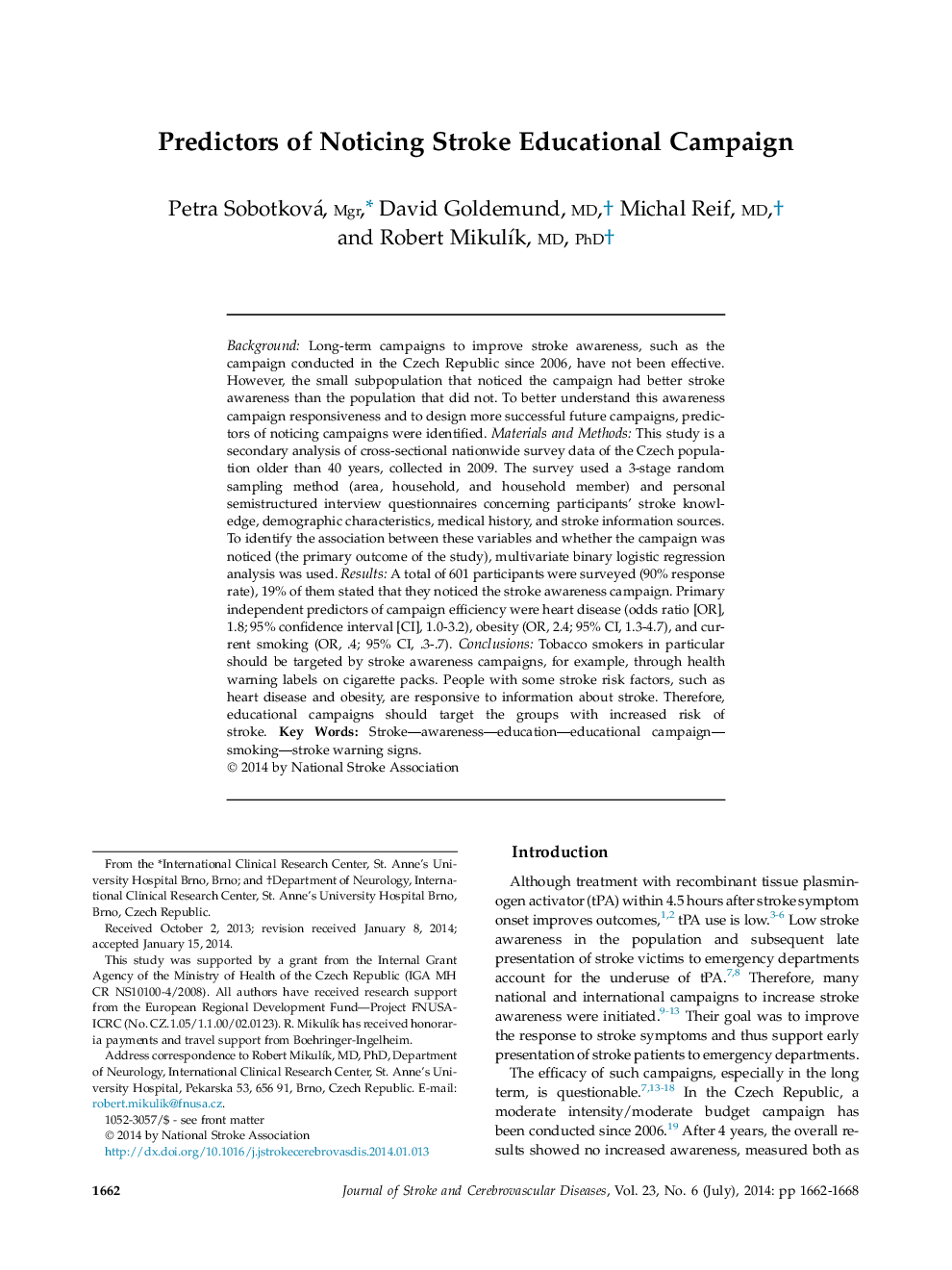| Article ID | Journal | Published Year | Pages | File Type |
|---|---|---|---|---|
| 5873347 | Journal of Stroke and Cerebrovascular Diseases | 2014 | 7 Pages |
BackgroundLong-term campaigns to improve stroke awareness, such as the campaign conducted in the Czech Republic since 2006, have not been effective. However, the small subpopulation that noticed the campaign had better stroke awareness than the population that did not. To better understand this awareness campaign responsiveness and to design more successful future campaigns, predictors of noticing campaigns were identified.Materials and MethodsThis study is a secondary analysis of cross-sectional nationwide survey data of the Czech population older than 40 years, collected in 2009. The survey used a 3-stage random sampling method (area, household, and household member) and personal semistructured interview questionnaires concerning participants' stroke knowledge, demographic characteristics, medical history, and stroke information sources. To identify the association between these variables and whether the campaign was noticed (the primary outcome of the study), multivariate binary logistic regression analysis was used.ResultsA total of 601 participants were surveyed (90% response rate), 19% of them stated that they noticed the stroke awareness campaign. Primary independent predictors of campaign efficiency were heart disease (odds ratio [OR], 1.8; 95% confidence interval [CI], 1.0-3.2), obesity (OR, 2.4; 95% CI, 1.3-4.7), and current smoking (OR, .4; 95% CI, .3-.7).ConclusionsTobacco smokers in particular should be targeted by stroke awareness campaigns, for example, through health warning labels on cigarette packs. People with some stroke risk factors, such as heart disease and obesity, are responsive to information about stroke. Therefore, educational campaigns should target the groups with increased risk of stroke.
